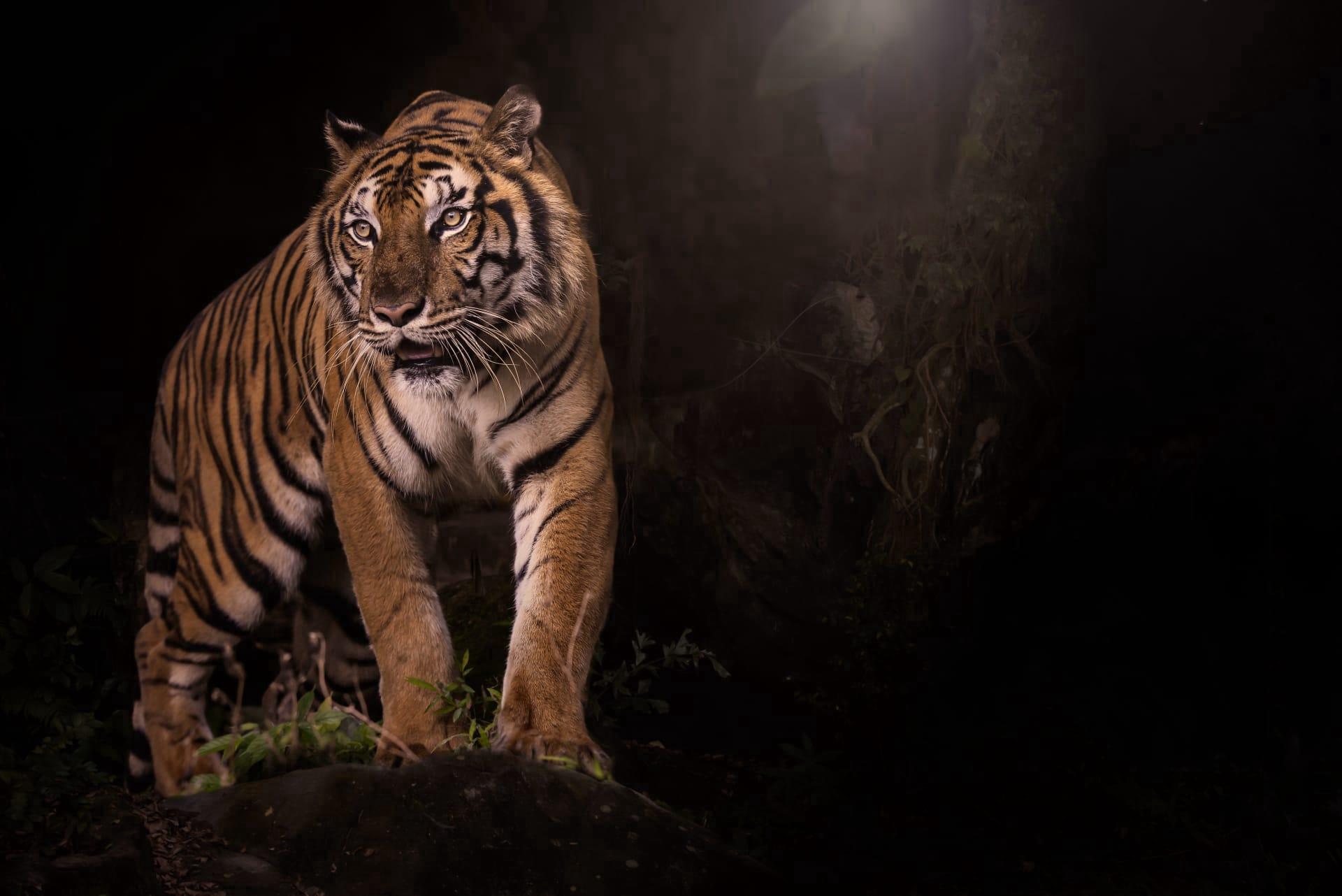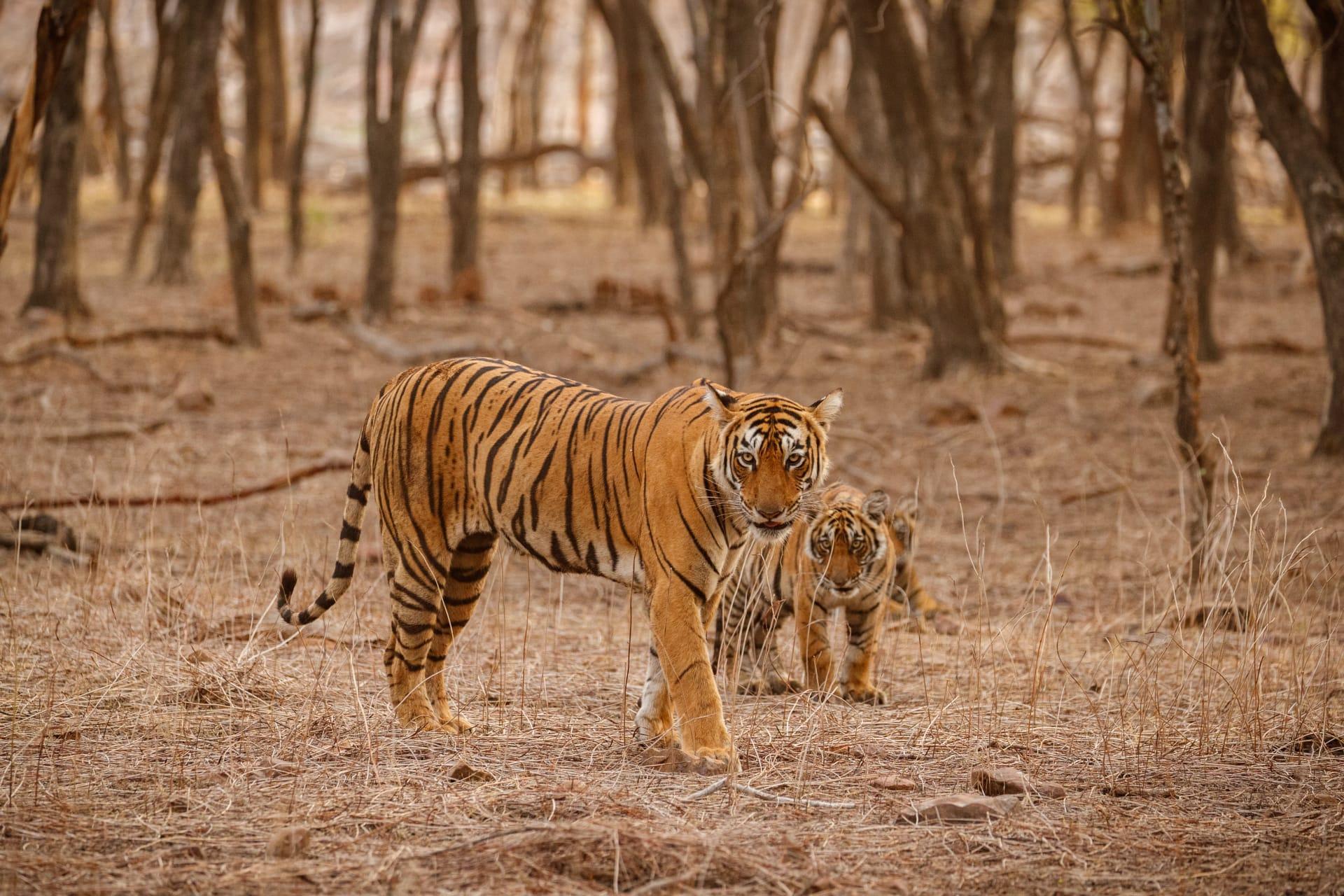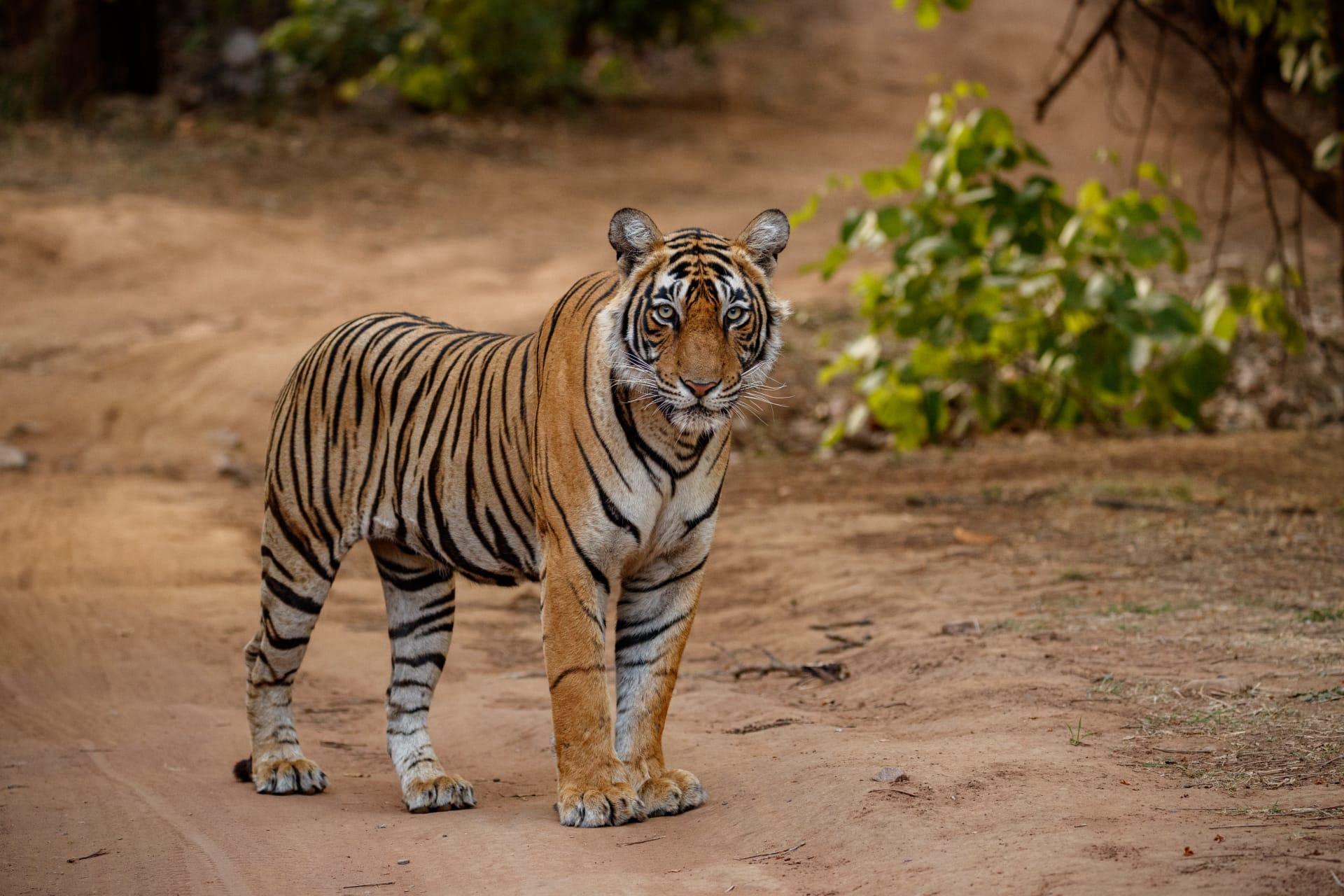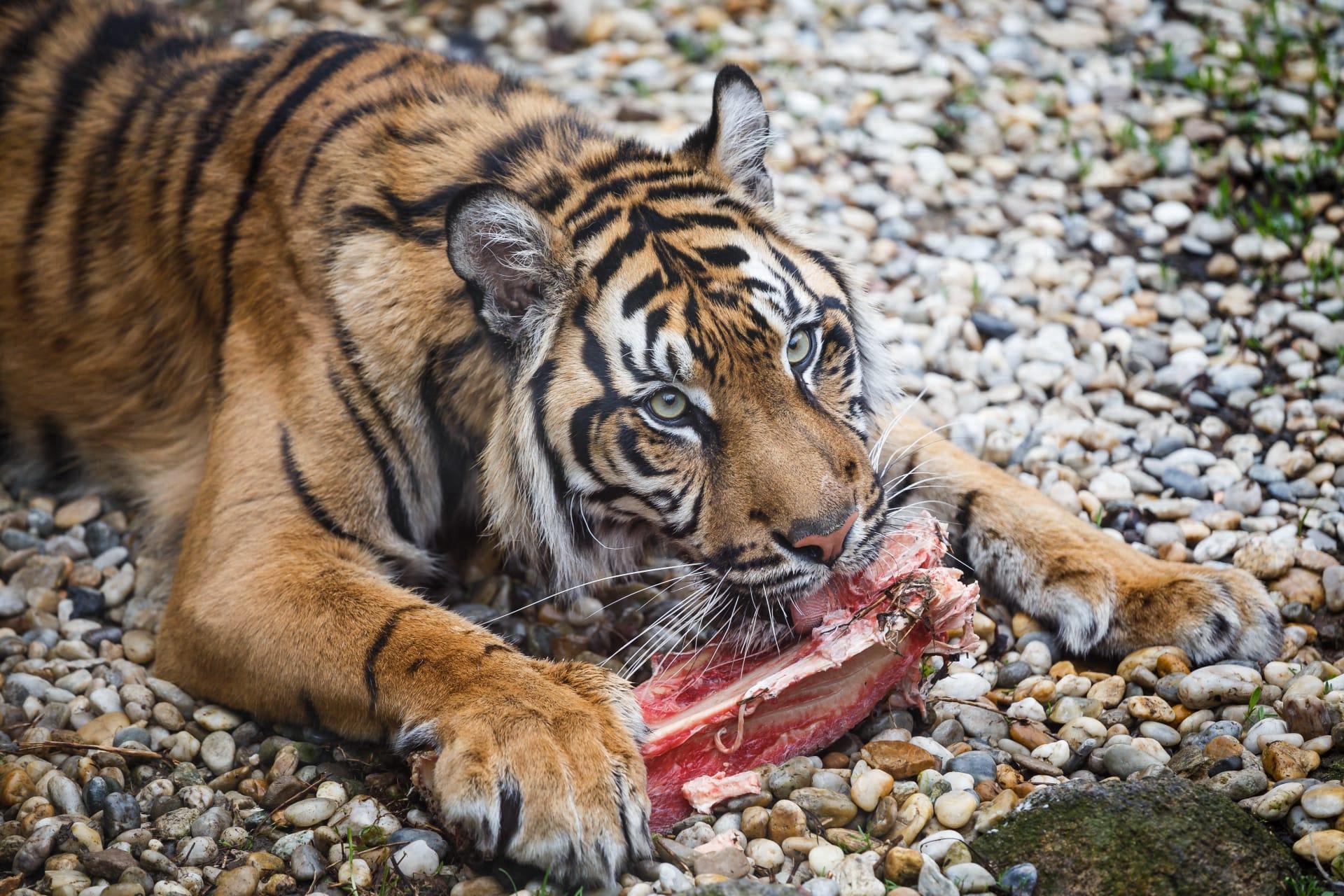Tiger Characteristics
- Home /
- Mini Encyclopedia /
- Animal /
- Tiger Characteristics
1
Tigers, the largest members of the cat family, are renowned for their power and striking appearance. Adult tigers can weigh between 200 to 300 kilograms (440 to 660 pounds) and measure up to 3.3 meters (11 feet) in length, including their tail. They have a lifespan of about 10 to 15 years in the wild, but in captivity, they can live up to 20 years or more. Tigers are distinguished by their dense, orange fur with black stripes, which varies from individual to individual, much like human fingerprints.
One of the tiger's most remarkable organs is its eyes. Tigers have night vision that is six times better than that of humans. This is made possible by a layer behind the retina called the tapetum lucidum, which reflects light back into the eye, increasing the amount of light available for the photoreceptors. This adaptation is crucial for their nocturnal hunting, allowing them to see and track prey effectively in low light conditions.

2
Question: Why do tigers have stripes?
Answer: The stripes of a tiger serve as camouflage, blending in with the forest's shadows and foliage. This pattern breaks up their body outline, making them less visible to prey. Each tiger's stripe pattern is unique and varies in density, color, and width, depending on their species and habitat. For example, Siberian tigers have fewer, paler stripes compared to their counterparts in denser, more tropical areas. The stripes are not just in their fur; the skin underneath also has the pattern, which suggests its importance in their survival and evolution.

3
Tigers are known for their impressive physical abilities. They can run at speeds up to 49 to 65 kilometers per hour (30 to 40 miles per hour) in short bursts, covering distances up to 10 meters (33 feet) in a single leap and jumping up to 5 meters (16 feet) in height. Their powerful hind legs make them excellent jumpers, and they are also good swimmers, able to cross rivers and lakes up to 6 kilometers (4 miles) wide.
In terms of hunting, tigers are solitary and opportunistic predators. They rely on their stealth and strength, stalking their prey silently before launching a sudden attack. Tigers primarily feed on ungulates such as deer and wild boar, but they are also known to hunt other animals, including leopards, pythons, and even small elephants. They can consume up to 40 kilograms (88 pounds) of meat in one meal, although they typically eat less.

4
Tigers inhabit a diverse range of environments, from the Siberian taiga to open grasslands and tropical mangrove swamps. They require large territories for hunting, which range from 20 to 100 square kilometers (8 to 40 square miles) for females and up to 250 square kilometers (97 square miles) for males. These areas must have sufficient cover, access to water, and an abundance of prey.
Regarding reproduction, tigers reach sexual maturity at around 3 to 4 years of age. Mating can occur at any time of year, but it is usually more common between November and April. After a gestation period of about 3.5 months, the female gives birth to a litter of 2 to 4 cubs. The cubs are born blind and are completely dependent on their mother for the first few months. They start hunting with their mother around 6 months of age and become independent at about 18 months. However, they often stay with their mother until they are 2 to 2.5 years old.

5
Book: "The Tiger: A True Story of Vengeance and Survival" by John Vaillant. Published in the United States in 2010, this non-fiction work delves into the depths of the Siberian wilderness. It recounts a gripping tale of a vengeful tiger hunting the humans in its territory, interweaving the natural history of tigers, the socio-economic realities of Russia, and the complexities of human-animal conflict.
Book: "Tigers in the Snow" by Peter Matthiessen. Published in the United States in 2000, this book by the renowned nature writer focuses on the plight of the Siberian tiger. It combines beautiful prose with meticulous research, presenting the efforts to conserve these magnificent animals in the face of poaching and habitat destruction. Matthiessen's work is a poignant exploration of the tiger's role in its ecosystem and human culture.